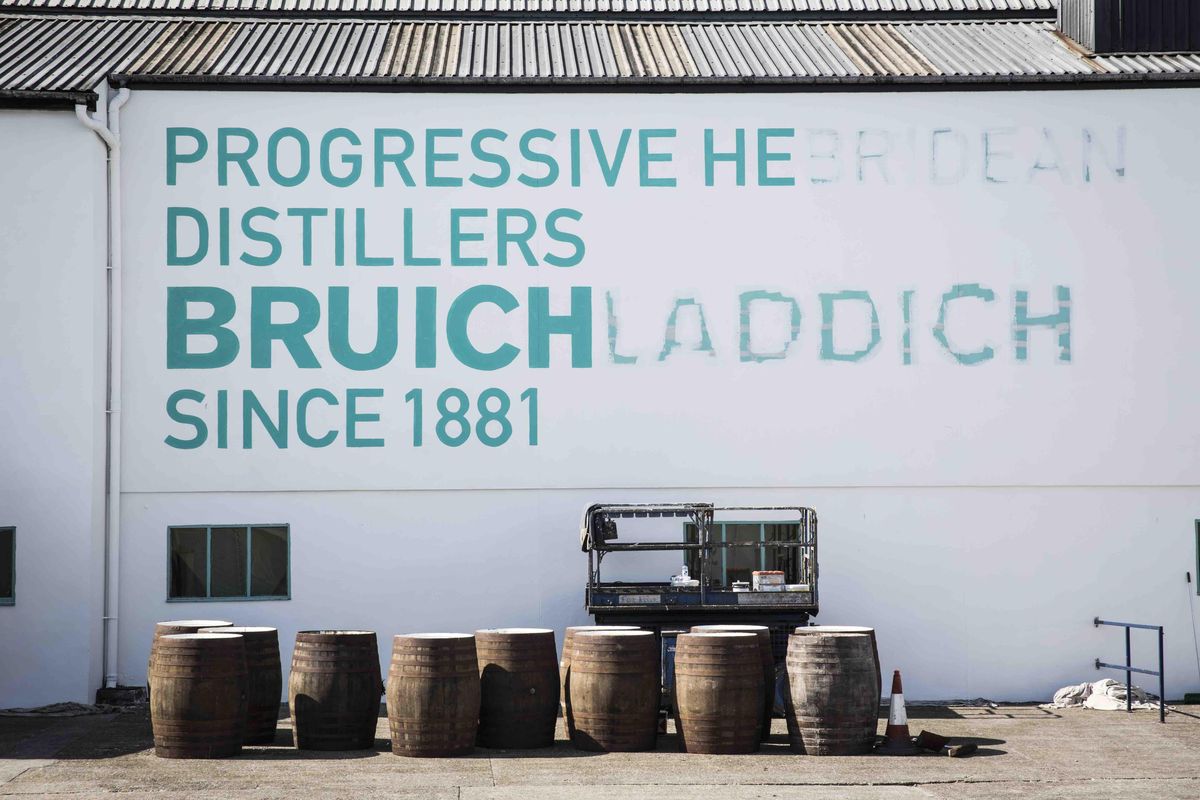Liquidity
It's December, So It Must Be Whisky

There are lots of great single malts, but for a splurge we love Bruichladdich
December 05 2016 7:15 AM EST
December 05 2016 1:16 PM EST
aaronhicklin
By continuing to use our site, you agree to our Private Policy and Terms of Use.

There are lots of great single malts, but for a splurge we love Bruichladdich
Oh whisky, what would we do without you? A drink of poets, whisky has felt especially useful during the long dark night of the soul that is our national nightmare. One sip and you are transported to a highland glen, or a windswept Scottish shore, hopefully not too close to Trump's money losing Scottish golf course.
There are whiskies for every temperament, of course, from the floral pepperiness of Highland Park, the country's northernmost distillery, to the sweet brininess of Old Pultneney, but a long-time favorite has always been Bruichladdich, one of Scotland's more eccentric and most inventive distilleries.
Back in the mists of time--well, December 2000, to be precise (when we were still arguing about the Gore v. Bush election results)--a gentleman by the name of Mark Reynier took a gamble on a mothballed whisky distillery on the Scottish island of Islay, famous as the home for the country's smokiest whiskies (most evidenced in the island's famous Laphroaig). But one of those whiskies--Bruichladdich--is not smoky at all, having dispensed with the tradition of using peat smoke to dry its barley in the 1960s. It was this distillery that Reynier salvaged. Under the guiding hand of master distiller Jim McEwan (poached from nearby Bowmore), Reynier and his investors rebuilt the 120-year old whisky distillery, and then set about restoring the lovely and delicate nectar to its former glory. Opened in 1881, Bruichladdich was best-known for the tall and narrow-necked stills used for distilling the spirit, a piece of Victoriana which has been miraculously retained. But more than that, the ethos that animates Bruichladdich today is rooted deeply in the idea of terroir--not just the sea gales that batter this rocky outcrop, but locally-grown barley that helps keep island farmers in business. The bottle's aquamarine color is a tribute to the extraordinary color of the ocean when the sun shines.
Scottish whisky takes time to mature--a good ten years to be considered at all acceptable--but while Reynier and McEwan were waiting for their first bottlings (from 2001) to be ready for market, they challenge the industry's consensus, launching a young and peaty Scotch, Port Charlotte, as well as investing in a Scottish gin, the Botanist. Experimentation has become something of a hallmark, and now Bruichladdich is known also for Octomore--a super peaty whisky--and its line of Black Art bottlings, made from back stocks of whisky and issued in limited supplies.
There are 12,000 bottles of Black Art 5, in which the youngest whisky is 24 years old. The taste is raisiny, with dark fruits and Christmas spice. At $399 it's definitely a special occasion whisky, but you'll have to wait until February when the bottling is officially released. In the meantime there's still stocks of the more affordable Black Art 4. Otherwise, you really can't go wrong with a $60 bottle of the Classic Laddie, finished in first-fill bourbon, sherry, and French wine casks, and with a lovely floral nose and a lingering taste of honey on the tongue.
More at Bruichladdich.com